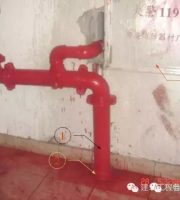In fact, in terms of value-added tax, it is not invoicing that causes the value-added tax liability.
(3) The enterprise shall determine the total amount of service revenue according to the contract or agreement price received or receivable from the labor service recipient, and recognize it as the current service revenue according to the total amount of service revenue at the end of the tax period multiplied by the completion progress minus the accumulated recognized service revenue in the previous tax years; At the same time, the amount of the estimated total cost of providing labor services multiplied by the completion schedule minus the accumulated recognized labor costs in the previous tax periods is carried forward to the current labor costs.
In concrete practice, many construction enterprises basically recognize value-added tax taxable income with invoices, accounting income with invoices, and enterprise income tax taxable income with invoices.
512) stipulates that if an enterprise is entrusted to process and manufacture large machinery and equipment, ships and aircraft, and to engage in construction, installation, assembly engineering business or provide other labor services for a period of more than 12 months, the realization of income shall be recognized according to the completion progress or workload completed in the tax year.
It should be noted that: first, if there is no amount not listed in the contract and the amount is determined at the subsequent actual settlement, the taxpayer should declare the taxable contract in the first tax declaration period of the written taxable contract, and calculate the declared stamp tax with the actual settlement amount in the next tax declaration period after the actual settlement; The second is that the actual settlement is larger than the contract, and the stamp tax shall be paid; Third, the actual settlement is less than the contract, and the stamp tax paid is not refundable; Fourth, the stamp tax is declared and paid at the place where the institution is located; Fifth, if the contract is not performed, the stamp tax paid will not be refunded or deducted, and the unpaid stamp tax will not be paid.
.
1、 Accounting revenue recognition time of construction enterprises.
The completion schedule of the transaction can be determined reliably; 3.
The contract specifies the rights and obligations of the parties concerned with the goods (or services provided) transferred; 3.
Therefore, the construction enterprise has the duty to pay stamp tax on the date of signing the contract.
The proportion of the cost incurred to the total cost.
The proportion of labor services provided in the total labor services; 3.
The amount of income can be measured reliably; 2.
Fourth, the date when the pledge deposit and security deposit are actually received is the time when the VAT liability occurs.
According to the stamp tax law, the duty to pay stamp tax occurs on the day when the taxpayer files the taxable certificate or completes the securities transaction.
14 – Revenue (Cai Kuai [2017] No.
3、 Recognition time of enterprise income tax income of construction enterprises.
The contract has clear payment terms related to the transferred goods; 4.
(2) The following methods can be used to determine the completion progress of labor services provided by enterprises: 1.
The Ministry of Finance issued the Accounting Standards for Business Enterprises No.
2、 The time when the value-added tax liability of construction enterprises occurs.
Measurement of completed work; 2.
The costs incurred and to be incurred in the transaction can be reliably accounted.
Third, if the invoice is issued first, the date on which the invoice is issued shall be the time when the VAT liability occurs.
Second, if no written contract has been signed or the payment date has not been determined in the written contract, the date of the completion acceptance of the construction project shall be the date when the VAT payment obligation occurs.
The parties to the contract have approved the contract and promised to perform their respective obligations; 2.
The consideration that the enterprise is entitled to obtain due to the transfer of goods to customers is likely to be recovered.
If the payment is made in advance, the value-added tax liability occurs on the day of payment, and the project payment is not paid according to the contract, The occurrence of VAT liability is also recognized.
(1) If the outcome of the transaction of providing labor services can be estimated reliably, it means that the following conditions are met simultaneously: 1.
Finally, it should be noted that although the project payment paid in advance before the commencement of the project does not incur VAT liability, it should be paid in advance according to law.
There are five preconditions for construction enterprises to recognize revenue, which are as follows: 1.
Article 23 of the Regulations for the Implementation of the Enterprise Income Tax Law of the People’s Republic of China (State Order No.
Neither accounting nor corporate income tax recognize the realization of income by invoicing.
22), which revised the revenue of construction enterprises.
For contracts that cannot meet the above five conditions for revenue recognition at the same time, the enterprise can recognize the received consideration as revenue only when it no longer has the remaining obligation to transfer the goods to the customer (for example, the contract has been completed or cancelled) and the consideration (including all or part of the consideration) that has been collected from the customer does not need to be returned; If it cannot be satisfied at the same time, the consideration received shall be accounted for as a liability (recognized as “contract liability”).
4、 The time when the stamp duty obligation of the construction enterprise occurs.
The contract has clear payment terms related to the transferred goods, and the contract has commercial essence; 5.
(2) According to Article 2 of the Notice of the State Administration of Taxation on Several Issues Concerning the Recognition of Enterprise Income Tax Revenue (GSH [2008] No.
The occurrence time of the value-added tax liability of construction enterprises can be divided into the following situations: first, for the construction services provided, according to the payment date agreed by both parties in the written contract, and in combination with the measurement confirmed by both parties, the payment date determined by the written contract is the time of the occurrence of the value-added tax liability.
875), at the end of each tax period, if the result of the transaction of providing labor services can be reliably estimated, the income from providing labor services shall be recognized using the completion progress (percentage of completion) method.


